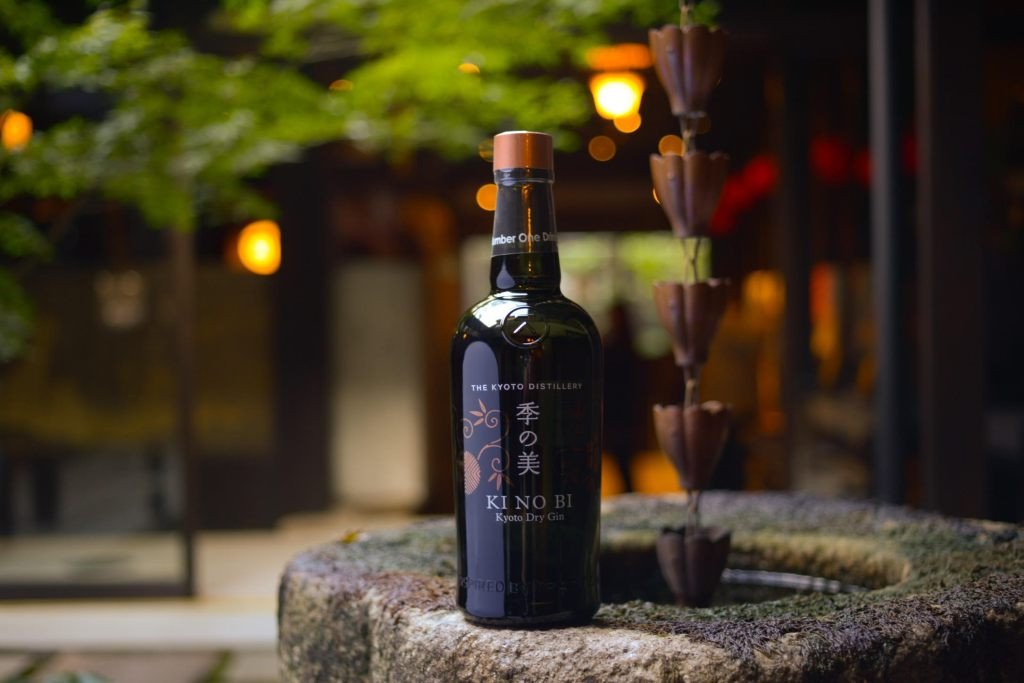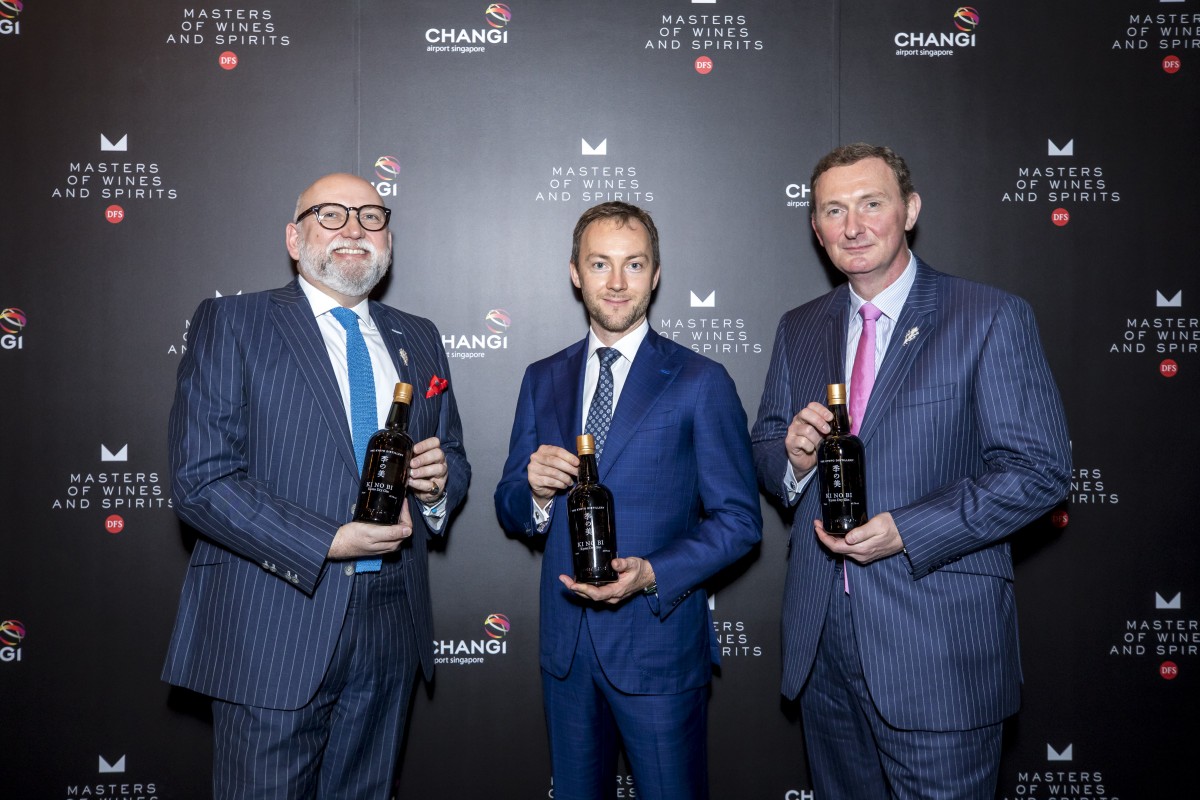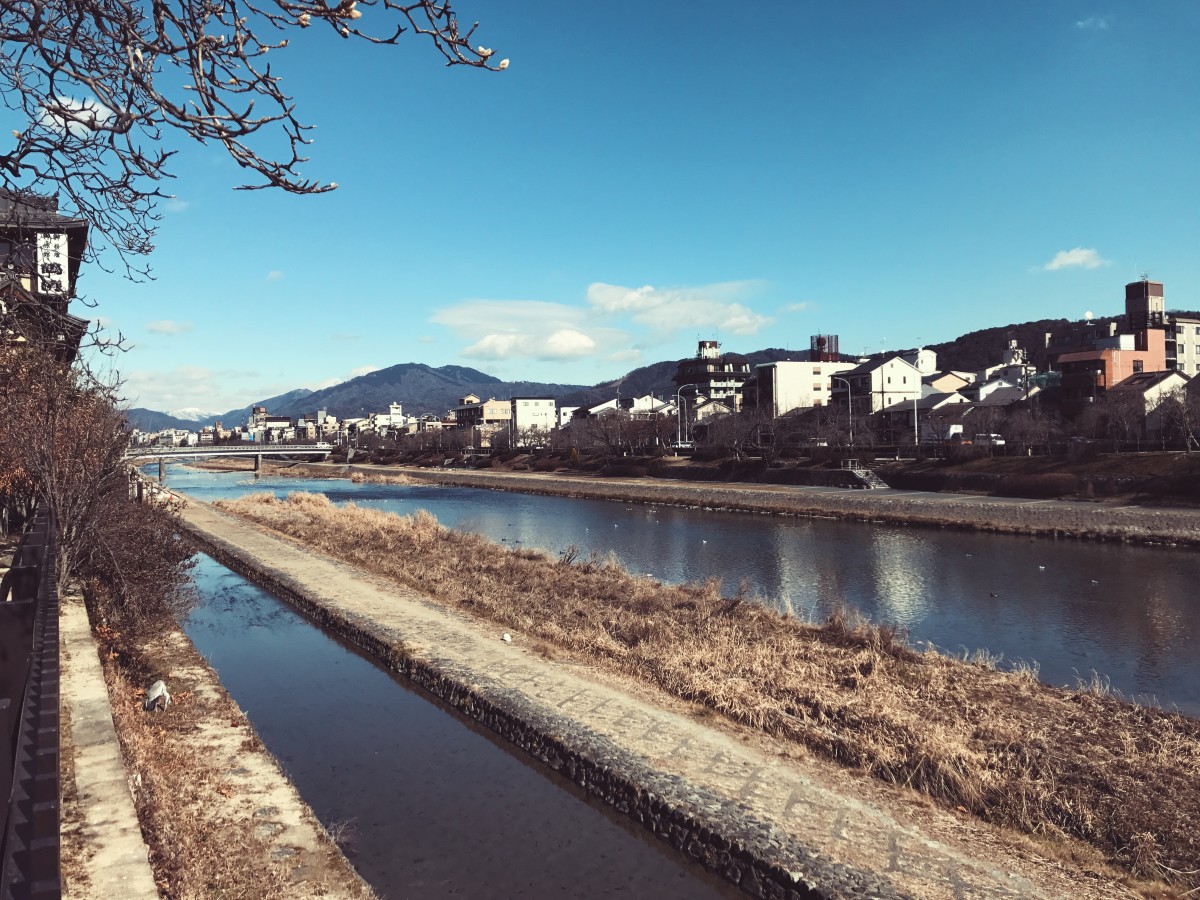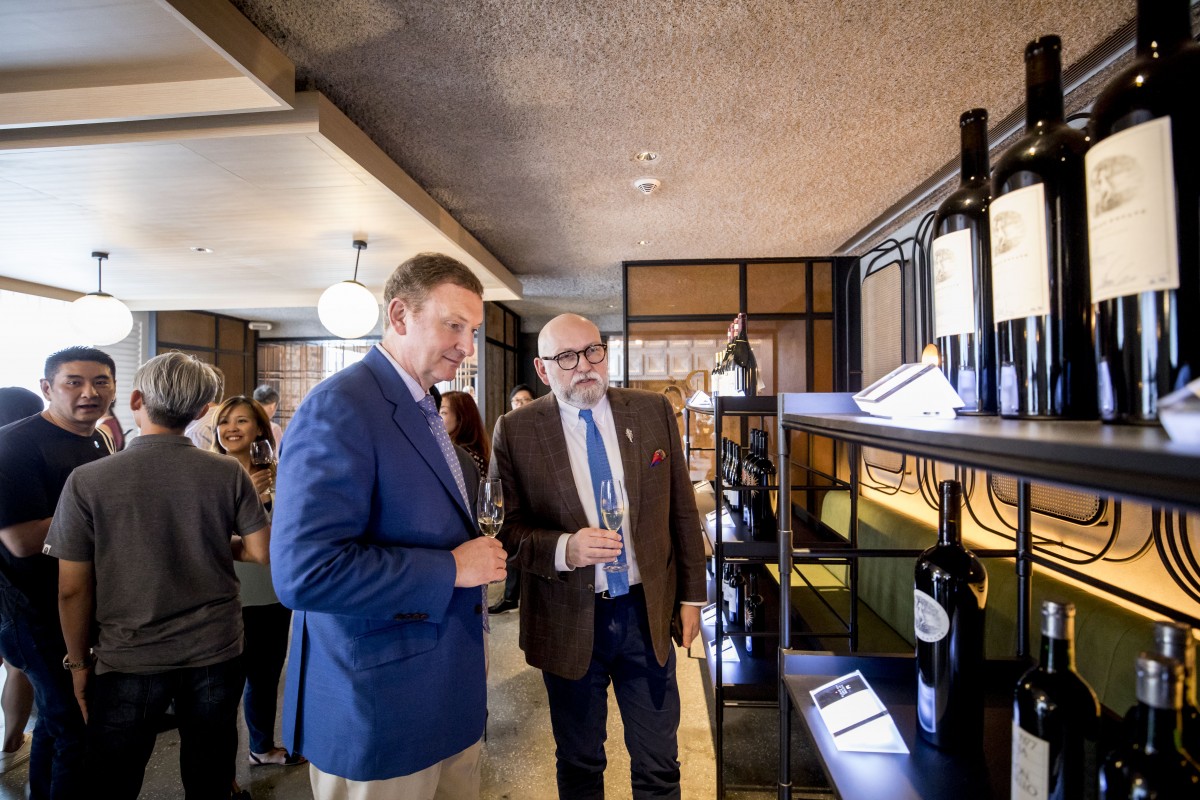
#599
KEEN ON KI NO BI
22 Jun 2018 By Ben Chin
More Things We Learned About Japan’s First Craft Gin Ki No Bi Gin (After We spoke To The Kyoto Distillery’s Co-Founder David Croll, Of Course.)
Much like the Ki No Bi Gin bottle that The Kyoto Distillery produces, co-founder David Croll cuts an imposing figure in his blue pinstripe suit. And much like the vaunted spirit in the bottle, the UK-born Croll showed himself to be genial and eloquent. He was in Singapore for the 7th DFS Masters of Wines and Spirits held at The Warehouse Hotel. And we were there to find out about the journey of Ki No Bi gin.

David Croll (right) produced Ki No Bi in 2016. The spirit swiftly claimed international attention when the flagship expression won the gold medal at the IWSC awards in 2017.
“Gin was always around, but it was always seen as a bartender’s tool, a workhouse ingredient. Classic cocktails would call for a gin, but there was very little brand awareness, the craft sense of things that was happening around the world,” Croll started to explain.
“When we started out, we created a botanical library of something like 60 different botanicals from Kyoto. We just distill them ourselves. For example, wasabi or 10 to 12 different citrus fruits. So, we have a huge database of flavours that weren’t used in Ki No Bi, but weren’t necessarily dismissed forever. We still get approached by new farmers and people from the agricultural community with interesting products they want to offer to us to distill.”

The famous Kamo River in Kyoto. Photo credit: Ben Chin
A lot of gin makers view gin as a transitional spirit, or “toriaezu gin” as Croll calls it. He elaborates. “Toriaezu biru… is the phrase Japanese people use to say, ‘let’s have a beer while we think about what we really want’. Particularly in the States, people have gone into producing gin but ultimately they want to make a whisky, which is a much longer term project in terms of the maturation and everything. In that sense, gin is seen as quite an attractive product because it has a much shorter lead time, from production through to sales.”
Thankfully there are no plans other than to focus on Ki No Bi for now. It’s a popular and acclaimed gin, and in January it was voted into the Top 10 Trending Gin Brands list by Drinks International.
“We stand by our commitment that we have no intention to make whisky. There’s (already) something like 18-20 whisky distilleries in Japan in various stages of fruition. Between now and the (2020) Olympics, we’ll see quite a lot of new Japanese whiskies in the market. We’re still really excited about the gin; there’s still so much more we can do.”
I asked if he personally enjoys drinking Ki No Bi?
“Well, for the standard Ki No Bi, (I drink it) as close to neat as possible. One interesting thing is a lot of bartenders and customers have been experimenting with the Japanese way of drinking, like the way of drinking shochu but applied to gin. A lot of people freeze their gin – you get this wonderful viscosity then, so it’s beautiful drinking it straight from the freezer. It warms in your mouth and you get all kinds of aromas coming up. If you look at traditional Western drinks, the martini probably works the best with Ki No Bi. It’s seen as being quite a delicate spirit. In complicated cocktails, it can lose its unique balance.”

So why Japan, and what is it about Kyoto he likes?
“I’ve lived in Japan for 25 years actually; it’s been home for half my life. I’d first visited Kyoto in 1985 and it just created a special impression; it’s totally different to Tokyo. It’s not just the temples and the shrines, it’s the history and the culture, everything from kimono making and sake to food trends like kaiseki. Even in the short time we’ve been involved in the business community there, there are so many businesses where you’re talking to the 15th generation president (for instance).
“Kyoto has one of the highest concentrations of multi-generational businesses in the world and I think it says something about the mindset there. My first business is first generation and to think of it extending forward 15 generations 300 or 400 years, that’s incredible – to have that unbroken train of continuity is amazing. We just felt Kyoto was the right place to do what we wanted to do – to create a Japanese gin.”
Thanks to DFS Masters of Wines and Spirits for organising the interview.
Like this? Here Are 7 Winning Gins to Get Into
Like this? Check Out This Roku Star From Japan

You might be interested in...
GIN-GLE ALL THE WAY
Brass Lion Distillery's December-Long Yuletide Celebration Checks All The Right Boxes Of My Grown-Up Christmas List
NEW BEGINNINGS
New Year, New Gins, Isn't That How The Saying Goes? In Any Case, Here Are Three Unique Gins From Three Different Countries That'll Be Your Tonic to The New Year.
MEET CHARMAINE THIO
Excuse Me Miss, Is Your Last Name Thio or Chio? Meet Charmaine Thio, Brand Ambassador for Hendrick's Gin, Southeast Asia.
GIN-GLE ALL THE WAY
NEW BEGINNINGS
MEET CHARMAINE THIO